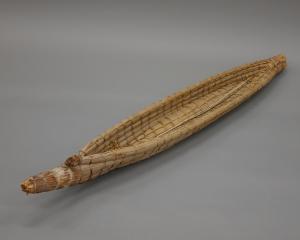
There is a display case at Otago Museum that I am absolutely fascinated with and that I also find deeply upsetting.
The case is a 1m x 1m box at the back of the Nature gallery.
It is filled with a small selection of New Zealand’s extinct birds — gone for good. Never will we get the chance to see or hear any of these in the wild.
Among the more familiar lost icons: huia, the South Island kokako, the whekau (laughing owl), one of the birds does not really catch your eye. It is unassuming, less than 30cm tall and has an orangey-brown to chestnut plumage and a long-pointed beak — perfect for hiding away from people in among the wire rush, raupo (bulrush) and flaxes of the wetlands. It is the long extinct kaoriki, the New Zealand little bittern, Ixobrychus novaezelandiae.
This bird is not the first bird that comes to mind when I think of human-driven extinctions and it is one that has quietly slipped out of the common consciousness — so extinct too, in the minds of most in people in New Zealand. If it was not for the about a dozen individuals held by museums around the world it would be forgotten about completely.
Historically records, observations and information about kaoriki is patchy, too. At one point in time, Otago Museum had two specimens of the kaoriki, the one which is in the Nature gallery was collected from Jackson Bay on the West Coast and a second, the holotype was collected from the head of Lake Wakatipu and sold to the National Museum (later Te Papa) in 1907.
Subfossil skeletal remains have been found in the North and South Island, as well as the Chathams, suggesting it was once had quite a widespread range prior to human arrival.
In the few behavioural accounts kaoriki were reportedly shy around humans. When spooked they would freeze and do their best to blend in to their surroundings by standing bolt upright. Their plumage of pale buff chest feathers that are fringed with brown steaks, brown buffy wing feathers and deep chestnut colouration on the shoulders imitates the surrounding vegetation. By remaining still when approached they were easy to catch.
One of the few eye-witness accounts, recorded by Walter Buller, tells of when a captive bird was approached by a cat, it let out a snapping cry. At other times when harassed it made sounds similar of that to the kingfisher, although not as loud.
The last of the definitive sightings of kaoriki was sometime prior to the mid-1890s. Birds kept in captivity, did not do well, especially when kept with other birds. Labelled fussy-eaters because they would only eat food that was presented in water. It is suspected that the majority of their diet was made up of galaxiid fishes. Extinction for kaoriki was likely caused by multiple factors, as with many extinctions in New Zealand. Stoats that were introduced in 1884 to control rabbits and were likely a major predator, as well as the already established rats leading to the eminent demise of this lovely looking, secretive little bird.
You can see this individual as well as other extinct birds which are gone, but forever frozen in time by museum taxidermy in the Nature and Southern Land, Southern People galleries at Otago Museum.
- Kane Fleury is assistant curator, Natural Sciences at Otago Museum.












